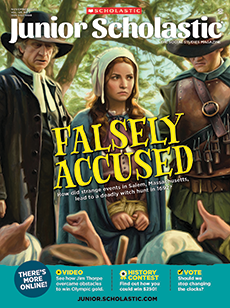Seventy-five years ago, the world got its first glimpse of a nuclear weapon that could inflict a new, horrifying level of destruction. In August 1945, the United States dropped atomic bombs on the Japanese cities of Hiroshima and Nagasaki.
Images of each blast showed an enormous cloud of smoke and debris shaped like a mushroom. On the ground, the bombs had a devastating effect: An estimated 200,000 people died.
At the time, Japan was fighting the U.S. and its allies to the bitter end in World War II (1939-1945). In an effort to defeat Japan—and avoid an invasion of that country that could have cost countless lives—U.S. President Harry S. Truman chose to deploy the new bombs. The action worked: Japan surrendered, ending the war. Yet the world still debates whether using the bombs was worth it.
Today, the U.S. is one of nine nations with nuclear weapons. Activists and leaders around the world are trying to make sure such bombs are never used again.
